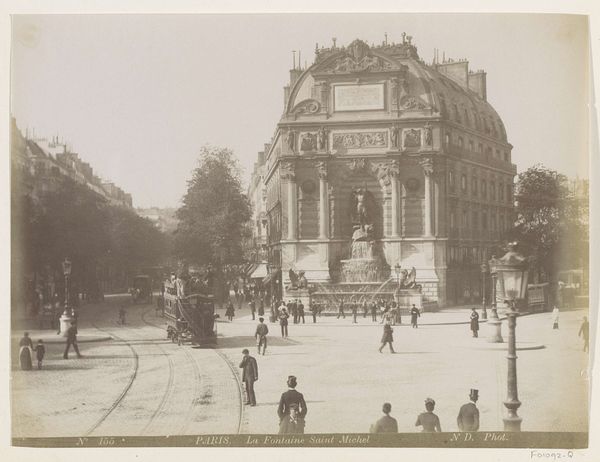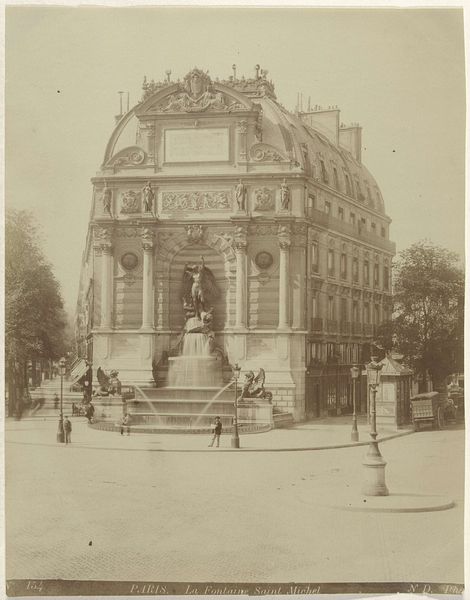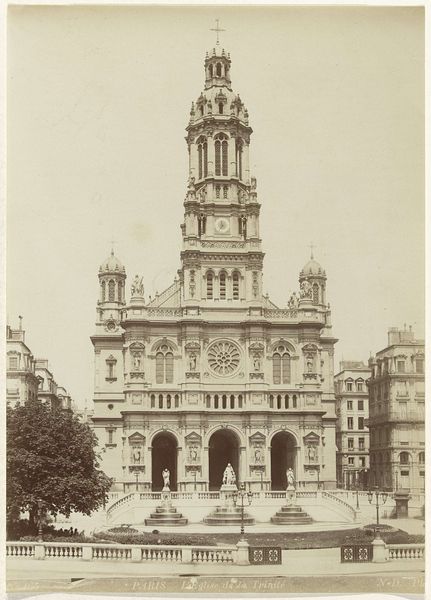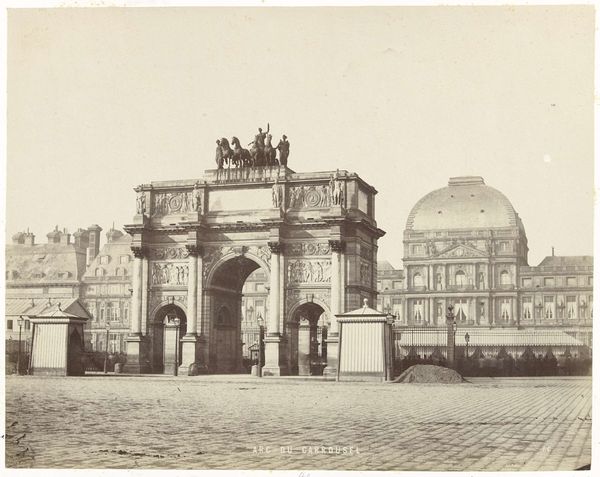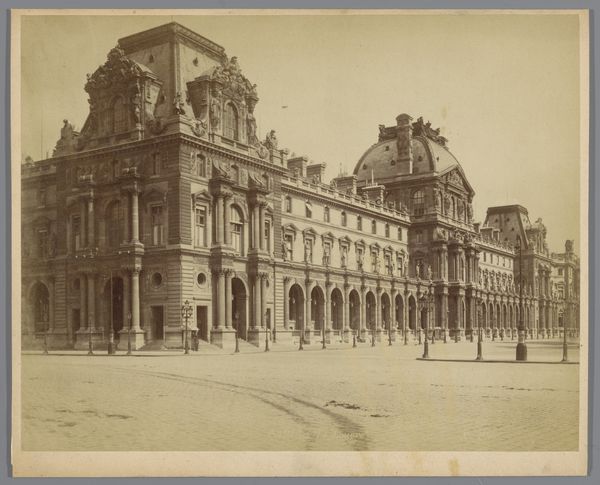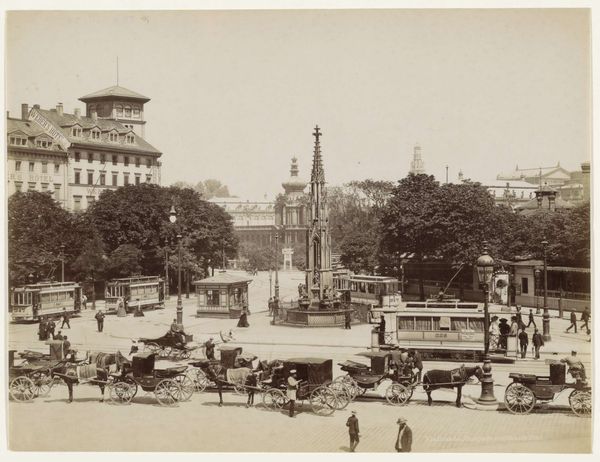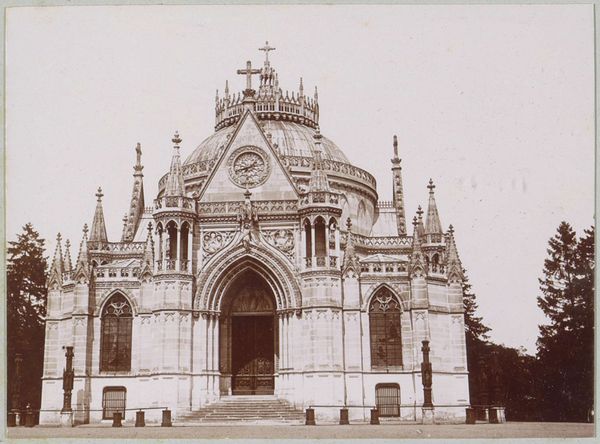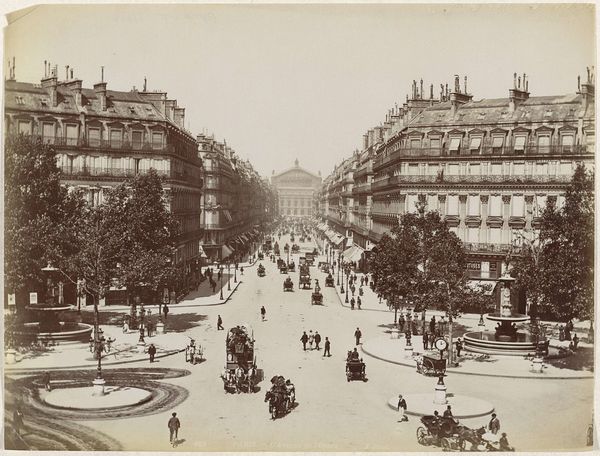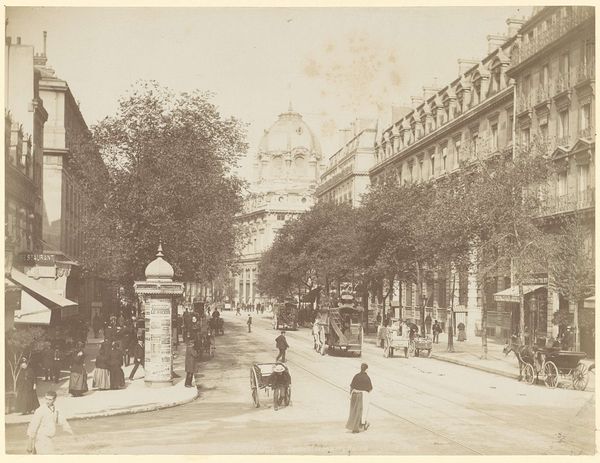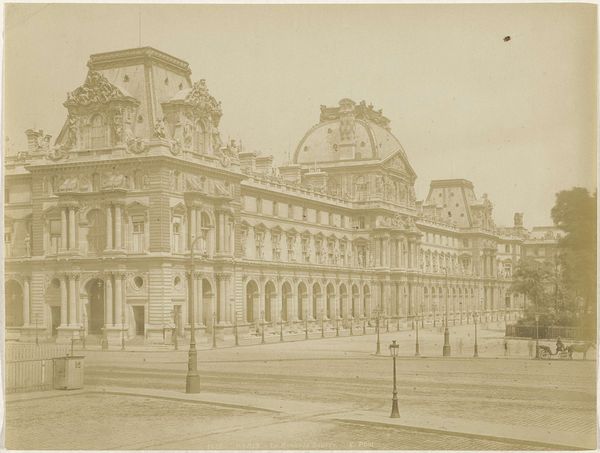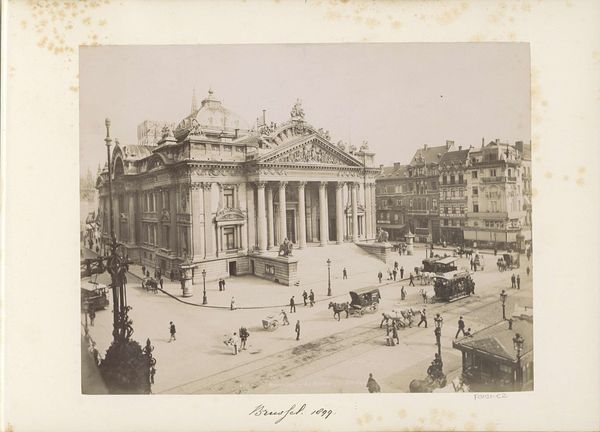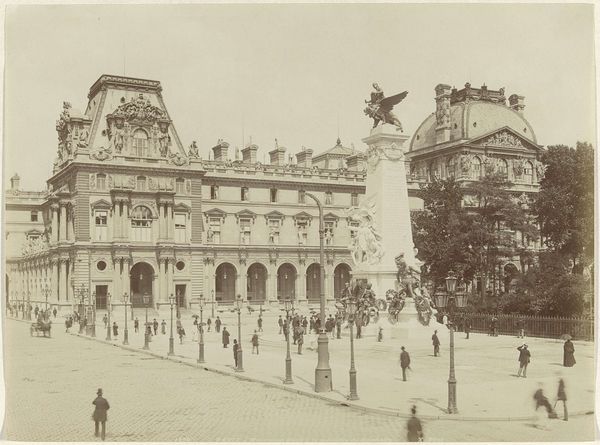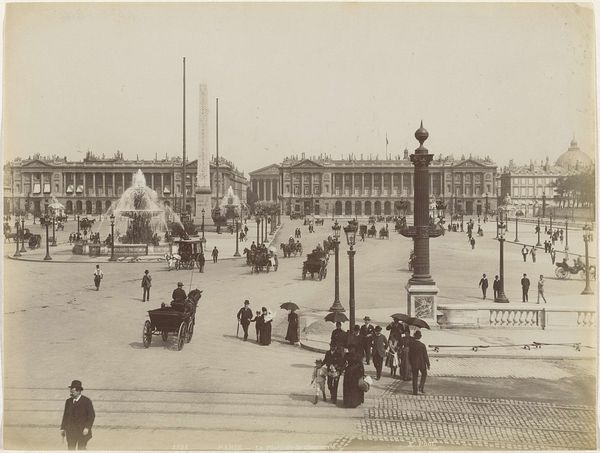
Dimensions: height 205 mm, width 274 mm, height 305 mm, width 411 mm
Copyright: Rijks Museum: Open Domain
Editor: This photograph, titled "Boulevard Malesherbes en de Saint-Augustin, Parijs", is estimated to have been taken between 1887 and 1900. It appears to be a print of an outdoor shot. What strikes me most is the scale – the grand church, contrasted with the people and horse-drawn carriages. How do you interpret this work? Curator: I see it as a fascinating record of urban development and social stratification through its means of production. Photography itself, by this time, had become relatively democratized, allowing for broader access to image-making and circulation, but it’s crucial to examine who controlled the technology and determined its aesthetic direction. The print process is itself a form of reproduction shaped by industrial capability. Editor: So, the technology is central to understanding the work. Does the aesthetic, say the composition, become less important then? Curator: Not less, but the composition needs to be considered alongside those technologies. What materials were used to produce this photograph, and how did those choices impact the image's durability and accessibility to different classes? Were there alternate cropping and selection decisions to reinforce specific readings, shaping public understanding of Parisian life and implicitly valorizing some lifestyles above others? The very act of documenting the boulevard at this time elevates it as a subject, even as countless working-class scenes are overlooked. Editor: That makes sense. Considering the act of documentation highlights what stories get told. How does this shape our modern perspective? Curator: This photograph acts as both a historical record and an artifact shaped by technological and social forces of its time. Understanding its materiality, method of production, and distribution allows us to deconstruct how power and status were, and are, manifested and disseminated through images. How does looking at this through a modern lens, change your view of similar contemporary photographs? Editor: I see now how deeply embedded those choices really are. Thank you, I’ll be looking at art differently from now on. Curator: A pleasure. Keep asking questions.
Comments
No comments
Be the first to comment and join the conversation on the ultimate creative platform.
